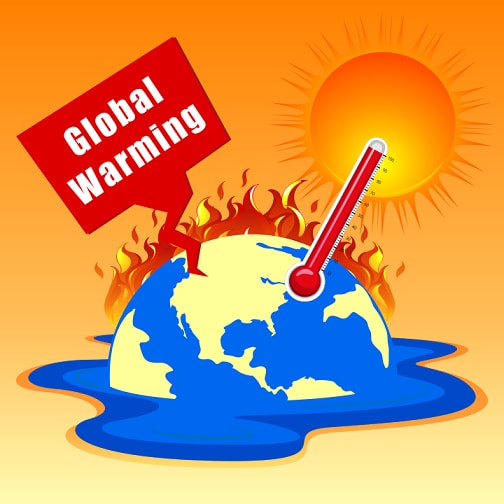The globe is warming rapidly. If its temperature continues to rise at its current pace, it will be uninhabitable by the end of this century.
This alarming warning was issued in a report released in August this year by a group of 234 experts from all over the world — called the Intergovernmental Panel on Climate Change (IPCC) -- who got together under the auspices of the United Nations.
"We have reached the red line and there is no chance for us to flee or hide," the group said in its 4000-page long report. They stated that the rapid rise in the earth’s temperature over the last 10 years has been unprecedented. If mankind does not slow down this rise by 2030, the group warned, its devastating effects will never be overcome.
Their report further said the process of climate change — that began as a result of industrial activity in the second half of the 20th century and continued in the first 20 years of the 21st century — is almost impossible to reverse in the next few decades. It also pointed out that the extreme heatwave that used to occur once every 50 years before the industrial age is now happening every 10 years and it is very likely that we will experience it every six to seven years in the future.
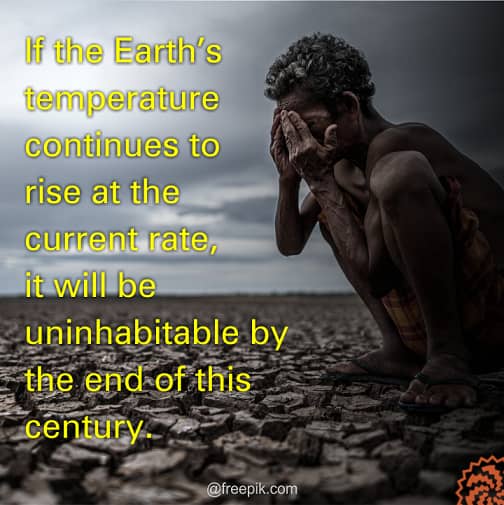
If that happens, incidents of drought, famine and wildfire will become more common and the frequency and intensity of hurricanes will increase manifold. Moreover, the rapidly melting glaciers will raise sea levels by seven to 11 inches by 2050. Coastal areas, meanwhile, will begin to sink due to the impacts of rising temperatures which will also reduce the amount of oxygen absorbed into seawater. This, in turn, will have such a negative impact on aquatic life that it could take several thousand years to repair.
The report’s authors agreed that, in order to maintain life on the earth in its current form, it was essential to ensure that the average global temperature did not rise by more than 1.5 degrees Celsius above the average global temperature that prevailed before the Industrial Revolution (between 1760 and 1850). If the global temperature cannot be maintained at this level, they warned, human beings will have to migrate to another planet by the end of this century.
Why is the earth warming?
The earth absorbs the sun’s heat during the day and releases it into the atmosphere at night. The atmosphere around the earth, however, contains greenhouse gasses – such as methane and carbon dioxide -- which prevent heat from being released into space. If the amount of these gases in the atmosphere exceeds a certain limit, heat from the earth becomes less likely to go into space and this raises the global temperature.
Global record shows that this temperature has been rising rapidly in recent times. The average global temperature, according to this record, has risen by 0.8 degrees in the last 100 years. Shockingly, 0.6 degree of this rise has occurred only in the last 30 years.
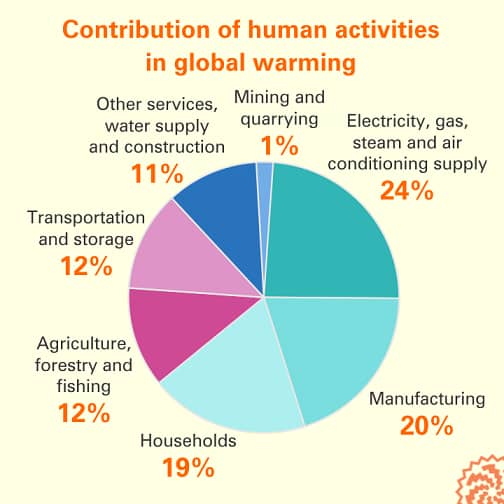
Experts use the pre-industrial revolution age as a standard to measure global warming. During this revolution, human beings began making rapid development in the industrial field which resulted in an increased use of fossil fuels, a major source of carbon dioxide and methane emissions.
Consequently, the amount of carbon dioxide around the earth has increased by 30 per cent since 1760 while the amount of methane has increased by 140 per cent.
The effects of this increase are becoming clearer by the day. For example, according to satellite data, sea levels have been rising at a rate of three millimetres a year for the past few decades. This is largely due to the fact that not only is the ocean water warming and spreading but also glaciers and polar ice caps on the mountains are melting due to rising temperatures. Satellite imagery clearly shows that polar ice has receded dramatically in recent years.
Alarm bells for the human civilization
The IPCC’s report provides a detailed map of the conditions caused by the rise in the earth’s temperature. According to it, by 2030, the average global temperature will be 1.5 degree or 1.6 degree Celsius higher than what it was in pre-industrial times.
Some time ago, meteorologists had predicted that this would happen by 2040 but now this is happening ten years ahead of their expectations, mainly as a result of human activity over the past two decades.
An early glimpse of this can be seen in the following six changes:
1. Rising temperature at the North Pole
In the near future, rise in temperature on the coldest days in the Arctic Ocean at the North Pole will be almost three times higher than the rise in average global temperatures.
2. Decreased ability of the earth to absorb carbon
Forests, soil and oceans absorb carbon dioxide emitted by human activities but their capacity to do so decreases as carbon emissions increase.
3. Severe weather
There will be a dramatic increase in heatwaves and torrential rains in the near future. Already in recent years, many countries have experienced melting of the asphalt layer on roads (due to a high temperature of about 50 degrees Celsius).
4. Rising sea level and melting of ice
The ice that has melted as a result of global warming will not freeze again for almost a thousand years. On the other hand, sea level will have risen by one meter by the end of 21st century.
5. Concentration of methane
The amount of methane in the atmosphere, which is considered the most dangerous gas for environment after carbon dioxide, has reached the highest level in the last eight million years.
6. The climax of the climate crisis
The current rate of global warming will increase the risk of ice layers collapsing, the melting of frozen rocks below the surface and the deforestation of the Amazon in the coming decades.
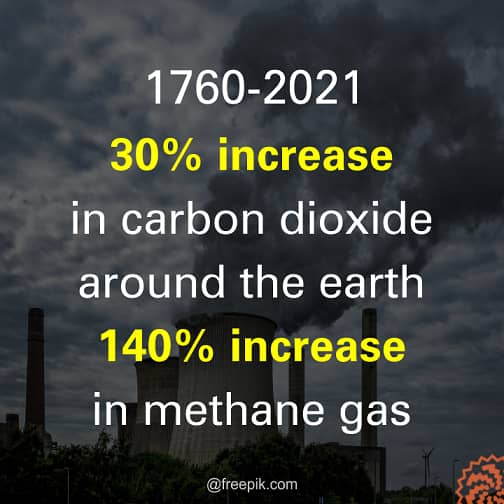
What will happen in Pakistan?
Pakistan accounts for less than one per cent of the total global emissions of greenhouse gases but it is one of the 10 countries in the world most affected by climate change. But it does not even have the technical and financial capacity to deal with the harmful effects of climate change. This is making these effects more severe here than in many other countries.
Experts say the intensity of heat in Pakistan will increase rapidly over the next 10 years and monsoon season will be longer than usual but, at the same time, drought will increase in the remaining months of the year. By 2050, many glaciers in the Karakoram mountains will have melted and changed shape, causing seawater to rise to dangerously high levels and coastal areas to be submerged.
According to a report by ActionAid — a non-governmental aid organization working in different parts of the world — rising sea levels, water shortages, declining agricultural production and drought are expected to displace 600,000 people in Pakistan by 2030. The Asian Development Bank estimates that, by 2050, more than 250 million people in Pakistan and Bangladesh will be living in places that are being severely affected by climate change.
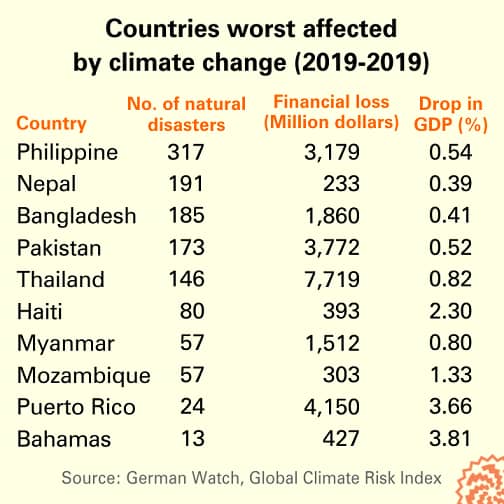
This change is a serious problem for Pakistan for another reason. Changes in temperature or rainfall systems are severely affecting its agriculture which will make its food security situation highly volatile in the years to come. Similarly, the rapid melting of ice and glaciers in the northern mountain ranges will jeopardize the country’s irrigation system and the risk of landslides will make many areas uninhabitable. The electricity and irrigation systems will also be affected and there will be frequent floods.
According to the Mackenzie Global Institute, a research firm, the social and economic effects of climate change in Pakistan will be severe. It says rising temperatures and increased rainfall intensity and duration could decrease agricultural production in rain-fed areas and reduce the country’s gross domestic product by seven to 13 per cent by 2050.
Climate change will also lead to mass migration. The IPCC report foresees migration from rural to urban areas, creating a resource crunch that will fuel sectarianism, ethnic and regional animosity, extremism and violence among people deprived of basic necessities.
Climate change will also intensify regional conflicts between South Asian countries. Water and land disputes between India and Pakistan, in particular, could assume dangerous proportions. In addition, large numbers of Afghans could migrate to Pakistan as a result of drought there.
Experts say that, in order to overcome these problems, we will have to make major changes in our lives and give up activities that are causing global warming. The most important step in making these changes possible is to stop the use of fossil fuels worldwide and invest heavily in renewable energy.
Published on 30 Sep 2021
